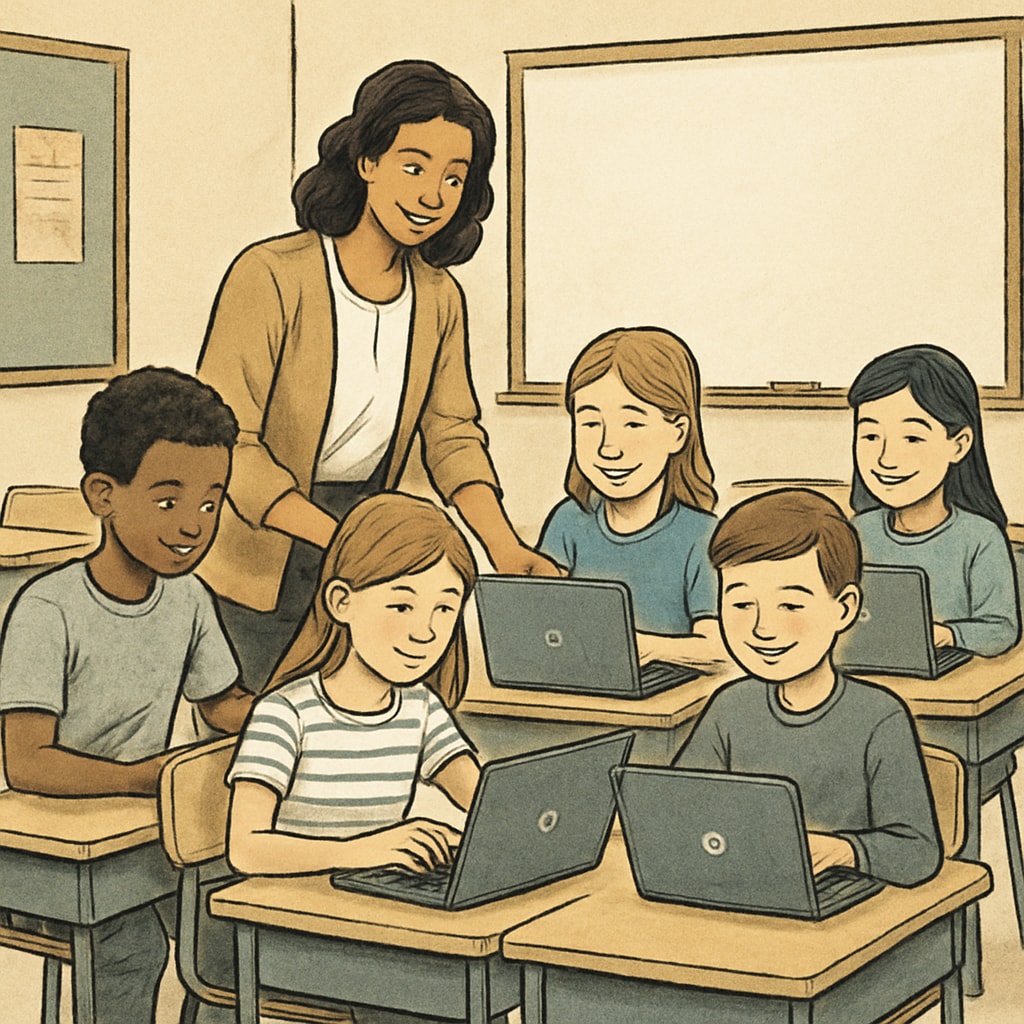In the modern classroom, education technology (EdTech) tools like Chromebooks have become indispensable. These devices streamline workflows, make lesson planning more efficient, and allow students to access a wealth of resources instantly. However, as schools embrace efficiency-driven EdTech, a pressing question arises: Are we inadvertently compromising students’ critical thinking skills and curiosity? The balance between technological efficiency and nurturing deep, independent thinking is an increasingly important challenge for educators.

The Rise of Efficiency-Driven Education Technology
Over the past decade, EdTech has transformed education. Tools like Chromebooks provide students with quick access to information, collaborative platforms, and even AI-assisted tutoring. These advancements have undoubtedly accelerated the pace of learning and reduced administrative burdens for teachers. For example, Google Classroom allows educators to distribute, collect, and grade assignments in a fraction of the time traditional methods required.
However, with every technological advancement, there are trade-offs. One significant concern is that the over-reliance on these tools may discourage students from engaging in deep, critical thought. When answers are just a click away, the need to analyze, question, and synthesize information diminishes. As a result, students may become passive consumers of knowledge rather than active participants in the learning process.
How Efficiency Impacts Critical Thinking Development
Critical thinking—the ability to evaluate evidence, analyze arguments, and solve complex problems—is a cornerstone of education. Yet, studies suggest that excessive reliance on EdTech can hinder its development. For instance, when students rely on multiple-choice quizzes or algorithm-based learning apps, they often focus on rote memorization rather than understanding the underlying concepts. This shift toward surface-level learning leaves little room for creativity or exploration.
Moreover, the ease of accessing information can create a false sense of mastery. Students may feel they “know” something simply because they found it quickly, without questioning the validity of the source or thinking about its broader implications. As Britannica’s definition of critical thinking emphasizes, questioning assumptions is essential—but this skill often takes a backseat in technology-driven classrooms.

Finding a Balance Between Efficiency and Deep Learning
To address these challenges, educators must strive to create a balance. While EdTech tools like Chromebooks are invaluable, they should be integrated thoughtfully to complement—not replace—traditional teaching methods. Here are a few strategies educators can adopt:
- Encourage Inquiry-Based Learning: Instead of simply assigning tasks through technology, teachers can design activities that require students to ask questions, conduct research, and present their findings.
- Limit Over-Reliance on Automation: Incorporate open-ended assignments that can’t be graded by algorithms, such as essays or projects that demand in-depth analysis.
- Teach Critical Evaluation of Sources: Equip students with the tools to assess the credibility of online information, fostering digital literacy alongside traditional critical thinking.
Furthermore, educators should recognize the limitations of EdTech and prioritize human interaction. Classroom discussions, debates, and collaborative problem-solving activities are irreplaceable in fostering critical thinking.
What Lies Ahead for EdTech and Education?
The future of EdTech is promising, but its role in education must be carefully managed. As artificial intelligence continues to advance, tools will become even more efficient and personalized. Yet, this makes it all the more essential for educators to remain vigilant. Technology should enhance education, not overshadow its foundational goals.
Educational technology is a powerful ally, but it is no substitute for the deep engagement and independent thinking that traditional educational methods can foster. By finding the right balance, schools can ensure that students not only succeed academically but also develop the critical thinking skills necessary to thrive in a complex, ever-changing world.
In conclusion, efficiency and critical thinking need not be mutually exclusive. With deliberate planning and a focus on holistic education, we can prepare students to be curious, reflective, and capable of navigating the challenges of the future.
Readability guidance: Use short paragraphs and bullet points to summarize key takeaways. Include transition words (e.g., however, therefore, for example) to maintain flow and ensure clarity. Balance critical analysis with actionable suggestions for educators.


